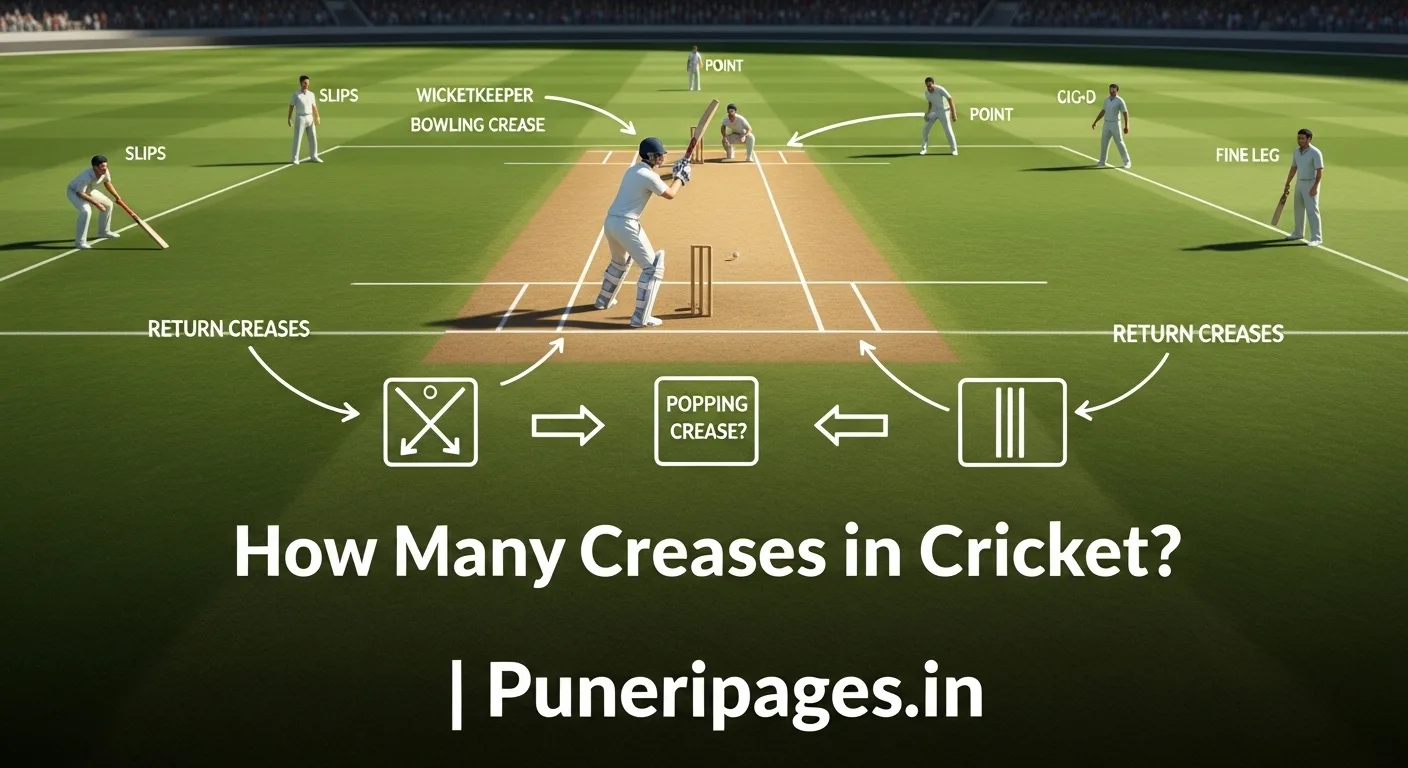
Learn cricket the fun way! Discover all the creases with PuneriPages.in's easy guide.
By Prashant for PuneriPages.in
If you’ve ever watched a cricket match and wondered what those white lines on the pitch are all about, you’re not alone. These lines, called creases, are crucial to the rules of the game. But how many creases are there in cricket? And what purpose do they serve?
In this guide, we won’t just give you a number. We’ll walk you through the story and strategy behind each crease, helping you understand the game better—whether you’re new to cricket or a curious fan.
Table of Contents
Quick Answer: How Many Creases?
There are four main creases on a standard cricket pitch:
- Two Popping Creases
- Two Bowling Creases
Additionally, there are two Return Creases (one on either side of the stumps at each end), making it six creases total on the pitch.
The Story Behind the Lines
These creases aren’t just painted lines—they define the rules, boundaries, and fairness of the game. Here’s what each one does:
1. Popping Crease: The Batter’s Safe Zone
- Located 4 feet (1.22 meters) in front of each set of stumps.
- It’s the line the batter must reach to avoid being run out.
- Bowlers also use it to ensure they don’t overstep while delivering the ball.
Why It Matters: This is where most of the action happens. When you hear “He’s made his ground!”—this is the line in question.
2. Bowling Crease: The Line of Delivery
- Runs parallel to the popping crease and goes through the stumps.
- Bowlers must keep their front foot behind this line during delivery.
Why It Matters: If the bowler’s foot crosses this line improperly, it’s called a no-ball, which gives an advantage to the batting side.
3. Return Crease: The Bowler’s Boundary
- Perpendicular to both popping and bowling creases.
- Extends behind the stumps and marks the bowler’s lateral movement limits.
Why It Matters: A bowler must keep some part of the back foot inside the return crease while delivering. Crossing it results in a no-ball.
Visual Summary: The Cricket Pitch Layout
If you imagine the cricket pitch from a bird’s-eye view, here’s how the creases are laid out:
| |
| Return Crease |
| |
----|-----------------|---- Bowling Crease
| Stumps |
| |
| Return Crease |
| |
Popping Crease(Repeat the same on the other end of the pitch)
Why Understanding Creases Is Crucial
- For bowlers: Avoiding no-balls and using the crease to change angles.
- For batters: Staying safe from run-outs and managing quick singles.
- For umpires: Making critical decisions based on a player’s position in relation to the crease.
Conclusion: More Than Just Paint
Creases may look like simple lines, but they define the rules of engagement in cricket. Whether it’s a batter diving to make the popping crease or a bowler adjusting stride length to stay within the return crease, these markings are the silent referees of the sport.
Next time you watch a game, look at the creases not just as lines—but as the boundaries of strategy, timing, and drama.
Written by Team PuneriPages.in — Simplifying Cricket, One Line at a Time.






